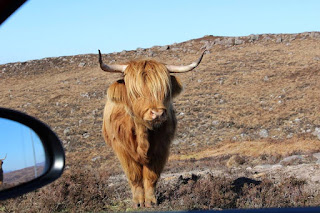The Most Northwesterly Point of the Contiguous United States: Cape Flattery
On Thanksgiving Day, Dad and I made the drive to Neah Bay where the Makah Indian reservation is located. Interestingly, the tribe still retain their rights to whale and hunt seals in the area. They have a large reservation that is far away from the rest of the population of Washington. However, that does not mean there is hardly anyone living in the bay area. They maintain a thriving community and have preserved their traditions well for future generations.
There is a museum on the reservation which houses the remains of a long house that was excavated in the 1970s. 500 years ago, a mudslide covered the houses, perfectly preserving them. Sadly, we did not get to see the houses or the artifacts inside but we did hike to Cape Flattery.
I will copy and paste the information on our visit from my Instagram account only because I am exhausted and don't want to rewrite it all.
The hike down to the point was fairly difficult but that was probably because it was raining and quite steep. The trail itself is partly made up if rocks, but the rest is a long narrow boardwalk with stairs. Each of them (and the rails) were slippery with rain and moss. When we made it to the point, we stood in awe as the waves broke inside the sea caves, causing a sound like a low horn blast to echo from their caverns.
The water is a dark turquoise color (I have not put any filters on these photos) that is, again, other-worldly. The caves are massive and the interpretive signs said they believe that a few hundred years from now, the stone will fall away due to the beating they endure from the sea.
Across from the point is Tatoosh Island, where Cape Flattery Lighthouse (built in 1857) still stands. The island was a seasonal village site for the Makah Indian tribe since... forever, and was an excellent place for fishing and whaling.
The Makah tribe are the only tribe in the United States who reserve their rights to continue whaling and hunting seal near the point.
The first European to sail to the area was Captain James Cook in 1778, and it was Cook who named it Cape Flattery because of the "flattering" coast that allowed ships to pass through.
Sadly, the lighthouse on Tatoosh Island is no longer in operation and has been vacant and neglected for many years. However, the Makah tribe understand the cultural and historical significance and refuse to allow the building to be torn down. Historical societies are now trying to get funding to repair and keep it in good condition for future generations to enjoy.
Dad and I were so happy we made it to the area and now have a better understanding of the tribal customs and way of life of the Makah people.





Comments
Post a Comment